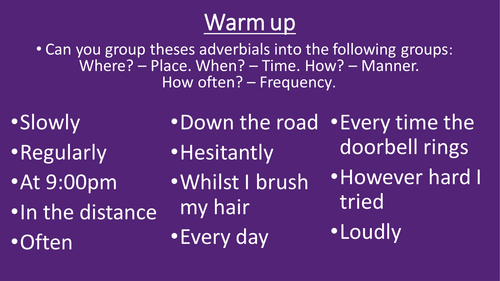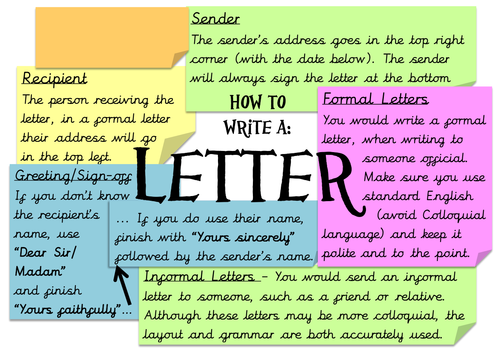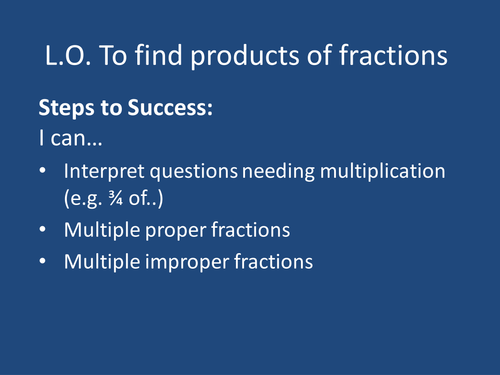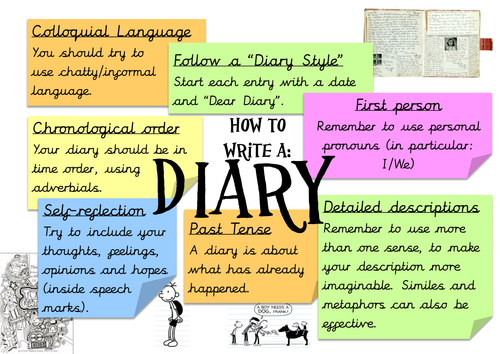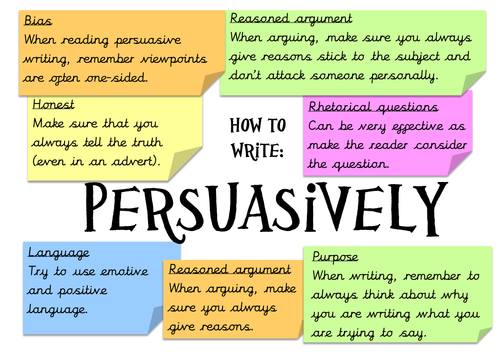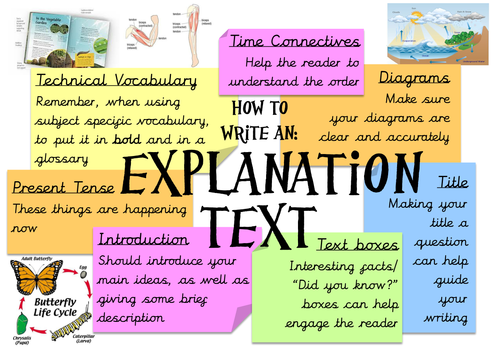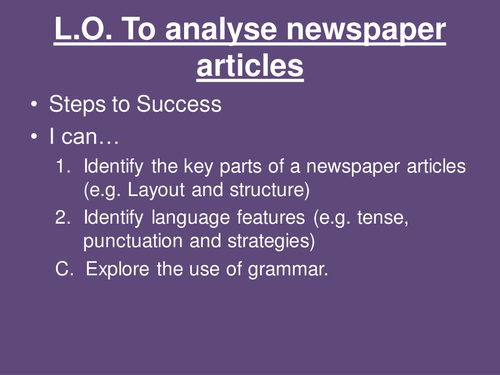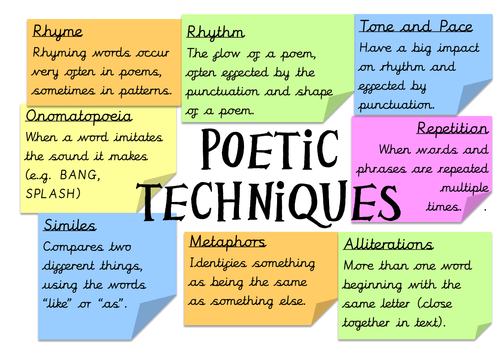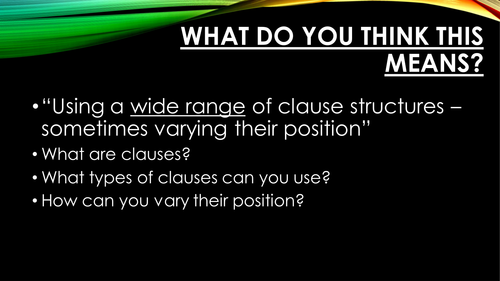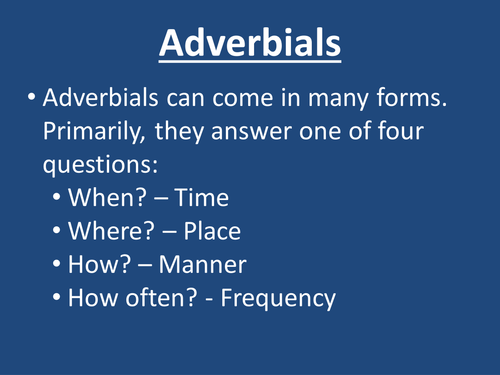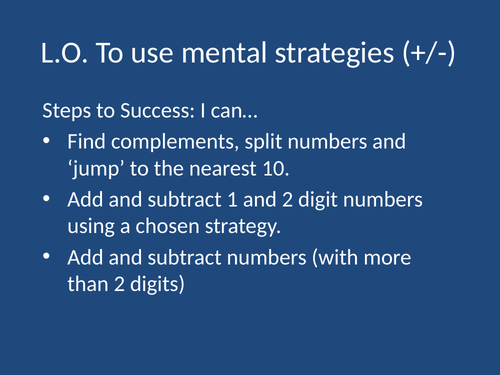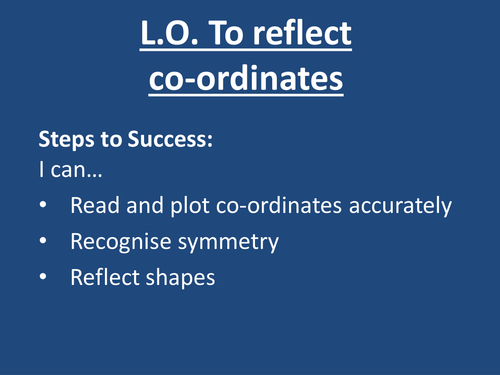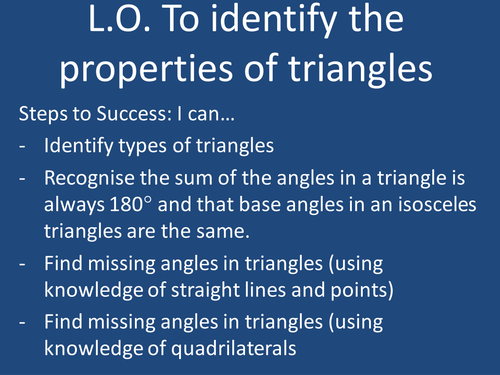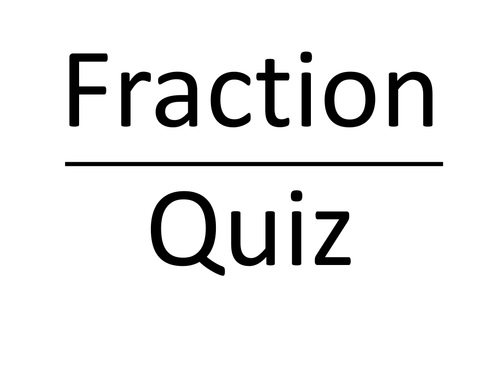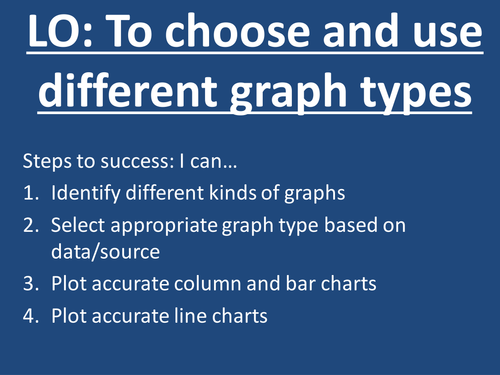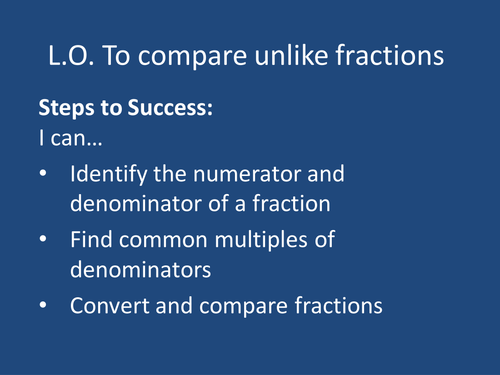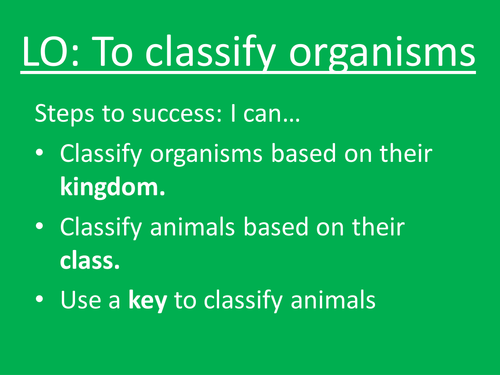32Uploads
238k+Views
122k+Downloads
All resources

Cohesive devices
Describes the different types of cohesive devices. (Note: there is a lot of information on each slide).

Varying clause structures
Discusses different types of clauses and how they can be modified/added to.

Mental calculation (addition/subtraction)
Models several methods for adding/subtracting using mental strategies.

Weekly maths problems posters
Contains 21 separate low-floor, high-ceiling tasks (aimed at year 6 - but could be used for older/younger children) which can be displayed as posters in classroom.
These questions are designed so that they can be entered at a relatively low level (all should be able to access these in some way - even if it's just the initial conceptualisation of the question), but there is a large scope for extended thinking.
Note: these can seem difficult at first, but (with the right approaches) are aimed to build resilience and determination in problem solving.

Properties of triangles
PowerPoint describes the properties of different types of triangles (including discussion of angles).

Features of graphs (including choosing graphs)
Describes different types of graphs, the fundamental features of graphs and when it is best to use certain graphs.

Comparing fractions
Discusses concepts of "like" and "unlike" fractions. Also, demonstrates an example method to compare fractions.

Classifying organisms
Information on different kingdoms. Focuses on different groups/classes of the animal kingdom.

Planetary investigation - data analysis
Includes data/information (e.g. oxygen levels, temperature, amount of vegetation/water, predators, gravity) on 6 imaginary planets - and Earth. Info on Earth is roughly accurate. This info is presented in the form of a table and as a range of graphs (e.g. pie/bar charts).
Aim of lesson is to first work out which graphs represent which planet. Children can then decided whether a planet is inhabitable (by comparing it to Earth's data).
(Includes brief lesson plan).

